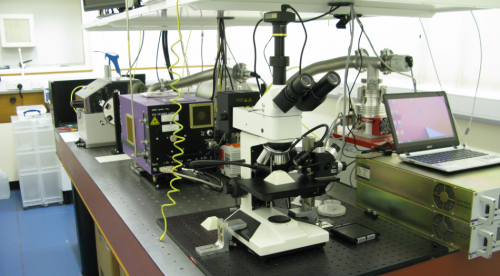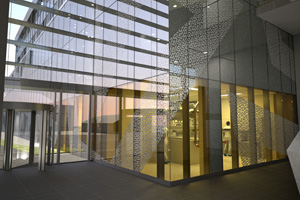Difference between revisions of "Facilities"
m |
|||
| Line 1: | Line 1: | ||
{{MainHeader}} | {{MainHeader}} | ||
| + | __NOTOC__ | ||
== Facilities: == | == Facilities: == | ||
Revision as of 11:36, 7 August 2014
Facilities:
CXS Laboratory
Oxides with strong electron correlation, play an increasingly important role in current condensed matter physics due to their intriguing interplay of spin-, charge-, and orbital ordering superimposed with lattice interactions. Single layers, heterostructures and superlattices of different materials such as cuprates, manganites, cobaltates, titanates and vanadates are at the core. Pulsed Laser Deposition techniques (PLD) are used as standard method.
Nanofabrication Centre
The Southampton Nanofabrication Centre is a state-of-the-art facility for microfabrication and high-spec nanofabrication, as well as a wide range of characterisation capabilities housed in the new Mountbatten Complex at the University of Southampton. One of the premiere cleanrooms in Europe, the Centre has a uniquely broad range of technologies, combining traditional and novel top down fabrication with state-of-the-art bottom up fabrication. This allows us to develop and produce a wide range of devices in diverse fields such as electronics, nanotechnology and bionanotechnology and incorporate them into an equally comprehensive array of nano and microsystems for analysis and use. The characterisation capability is similarly extensive catalogue of microscopes and test gear, from nanometre resolution scanning microscopes to electrical, magnetic and RF analysis.
Iridis
Iridis is the University of Southampton's Major high performance computing facility. It boasts an 250 TeraFlops of computer performance. Currently in it's fourth generation, Iridis is the most powerful university-based supercomputer in England and the third largest academic supercomputing facility in the UK. Iridis4 is ranked in the top ten of the UK’s elite supercomputers. The facility is powered by IBM® Intelligent Cluster solutions and includes Intel® Xeon Phi™ coprocessors, which can take control of some of the most demanding mathematical calculations to significantly increase its processing power. The Intel® Xeon Phi™ coprocessors are each capable of running at one teraflop, (one trillion calculations per second).
Diamond Light Source
The Diamond Light Source is the UK’s national synchrotron science facility, located at the Harwell Science and Innovation Campus in Oxfordshire. The facility is used by over 3,000 academic and industrial researchers across a wide range of disciplines including structural biology, energy, engineering, nanoscience and environmental sciences.

